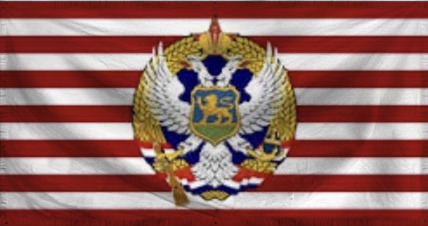
Advertisement

![]() by The Equalist Imperium » Sun Jan 26, 2020 7:05 pm
by The Equalist Imperium » Sun Jan 26, 2020 7:05 pm

![]() by Southern German » Mon Jan 27, 2020 12:51 pm
by Southern German » Mon Jan 27, 2020 12:51 pm


![]() by Monati » Mon Jan 27, 2020 6:19 pm
by Monati » Mon Jan 27, 2020 6:19 pm

![]() by Monati » Mon Jan 27, 2020 7:21 pm
by Monati » Mon Jan 27, 2020 7:21 pm

![]() by Russian Homeland » Tue Jan 28, 2020 5:35 pm
by Russian Homeland » Tue Jan 28, 2020 5:35 pm

![]() by The Swan Coastal Plain » Tue Jan 28, 2020 7:16 pm
by The Swan Coastal Plain » Tue Jan 28, 2020 7:16 pm

![]() by The Nerf Principality » Tue Jan 28, 2020 7:24 pm
by The Nerf Principality » Tue Jan 28, 2020 7:24 pm

![]() by Monati » Tue Jan 28, 2020 7:31 pm
by Monati » Tue Jan 28, 2020 7:31 pm
- Shanghai University
Known for its prestigious and high-ranking universities which most citizens of the UMAF, go to study and earn professional degrees. Most notably they have one of the best nursing, engineering, health sciences, robotics, and business/economics programs in the nation.
- Jiangsu University
- University of Fujian
- Tokyo High Academy
- Fukushima University
- Hokkaido University
- University of Osaka
- University of Hiroshima National
- University of Beijing National, UBN
- Hebei University
- University of Taipei, UTPI
- Nanning University
- Guangdong University
- University of Hong Kong, UHK
- University of Quanzhou
- Taipei High Academy
- Tokyo University
- Qingdao University
- Yokohama University League
- Osaka University
- University of Hiroshima National
- Tokyo High University
- Shanghai University
- Fujian University
- University of Hong Kong
- University of Nanning
- Niigata University
- Oghot University
- Sakhalin University National
- Okha Academy
- Chyla University
- Sofiyska Academy
- Yuzhno Academy
- Hawaii University

![]() by Monati » Wed Jan 29, 2020 3:57 pm
by Monati » Wed Jan 29, 2020 3:57 pm

![]() by Taoiseach Federalist Unions » Thu Jan 30, 2020 12:58 pm
by Taoiseach Federalist Unions » Thu Jan 30, 2020 12:58 pm

![]() by Taoiseach Federalist Unions » Thu Jan 30, 2020 1:25 pm
by Taoiseach Federalist Unions » Thu Jan 30, 2020 1:25 pm

![]() by Monati » Thu Jan 30, 2020 5:24 pm
by Monati » Thu Jan 30, 2020 5:24 pm



![]() by The Nerf Principality » Thu Jan 30, 2020 9:04 pm
by The Nerf Principality » Thu Jan 30, 2020 9:04 pm

![]() by Monati » Thu Jan 30, 2020 9:58 pm
by Monati » Thu Jan 30, 2020 9:58 pm




![]() by Key Largo » Thu Jan 30, 2020 11:50 pm
by Key Largo » Thu Jan 30, 2020 11:50 pm

![]() by The Equalist Imperium » Sat Feb 01, 2020 8:02 pm
by The Equalist Imperium » Sat Feb 01, 2020 8:02 pm

![]() by Southern German » Sun Feb 02, 2020 3:14 pm
by Southern German » Sun Feb 02, 2020 3:14 pm


![]() by The Swan Coastal Plain » Sun Feb 02, 2020 8:24 pm
by The Swan Coastal Plain » Sun Feb 02, 2020 8:24 pm

![]() by Monati » Sun Feb 02, 2020 8:49 pm
by Monati » Sun Feb 02, 2020 8:49 pm


![]() by Ozerstine » Mon Feb 03, 2020 10:52 am
by Ozerstine » Mon Feb 03, 2020 10:52 am


![]() by SECP » Mon Feb 03, 2020 7:52 pm
by SECP » Mon Feb 03, 2020 7:52 pm

![]() by Monati » Mon Feb 03, 2020 11:13 pm
by Monati » Mon Feb 03, 2020 11:13 pm

![]() by Monati » Tue Feb 04, 2020 2:31 pm
by Monati » Tue Feb 04, 2020 2:31 pm


![]() by The Equalist Imperium » Tue Feb 04, 2020 7:06 pm
by The Equalist Imperium » Tue Feb 04, 2020 7:06 pm

![]() by Russian Homeland » Tue Feb 04, 2020 7:17 pm
by Russian Homeland » Tue Feb 04, 2020 7:17 pm
Advertisement
Return to International Incidents
Users browsing this forum: Azmeny, European Federal Union, Google [Bot], Greater Marine, LFPD Soveriegn, Russia and Collaborative States, The Astovia, Verska
Advertisement